After attacking more than a dozen young Hawaiian monk seals, the aggressive male known as KE18 had to be banished from his island home. He now lives in a seawater pool in California, a few hundred yards from the Pacific Ocean.
Instead of assaulting more members of his species — one of the most endangered marine mammals on the planet — KE18 is now providing information that could help to keep the seals from going extinct. On a breezy June day at the University of California, Santa Cruz, an animal trainer is working to teach him to wear a metal tube containing a trio of accelerometers, tiny devices that track and log changes in velocity. It is the seal version of the fitness trackers that joggers and other endorphin addicts wear on their wrists to capture their every move.
Heaving his 200 kilograms up on the side of the pool, KE18 opens his mouth to show off his teeth and gets a fish as a reward. “We use a lot of fish and hot dogs in our lab,” says biologist Terrie Williams, who heads the mammalian physiology lab.
The hope is that data collected on KE18 will help to explain a mystery about the threatened Hawaiian monk seal (Monachus schauinslandi). Most of the population lives in the remote northwestern end of Hawaii's island chain, where four in every five pups die before reaching adulthood and the population is falling by more than 3% a year. “They end up starving to death,” says Charles Littnan, who runs the Hawaiian Monk Seal Research Program at the National Oceanic and Atmospheric Administration in Honolulu. But a much smaller population living close to the crowded beaches of the main Hawaiian islands is actually growing, despite all the human activity nearby.
KE18 could be the key to deciphering why the two groups are on opposite trajectories. Researchers at the university's marine lab are teaching the seal to wear a flipper cuff holding the accelerometers while exercising in his pool. Soon, they will also start to measure the oxygen content of his breath — a proxy for how hard he is working. By combining those data and the accelerometer information, Williams and her colleagues can calibrate the amount of energy that KE18 uses as he swims. They plan to use those data to interpret the readings from accelerometers placed on wild monk seals, which should help to determine why they are not thriving — whether they are wasting energy, for example, by having to swim too far to catch prey.
Seals are not the only animals wearing fitness trackers. In the Arctic earlier this year, researchers fitted polar bears (Ursus maritimus) with accelerometers to see how much energy they expend while swimming the ever-increasing distances to reach dwindling ice floes. Marine biologists are deploying the devices to find out whether warming oceans are impairing the swimming prowess of fish. And in the western United States, motion trackers on mountain lions (Puma concolor) will help to determine how much extra energy they burn negotiating the sprawl of human development.
As accelerometers have become cheaper and smaller — largely because of their use in mobile phones — wildlife biologists have embraced them as a way to collect data on movement and energy consumption. The information is starting to answer basic questions about animal behaviour and physiology, and help researchers to predict how climate change, habitat destruction and human activity will affect animals.
The flood of data coming in is altering the kinds of questions that wildlife biologists ask, says Craig Franklin, an eco-physiologist at the University of Queensland, Australia. “People are really starting to realize the value of physiology in addressing conservation.”
The cost of energy
Biologists sometimes say that energy is the currency of life. “If animals are going to collect one thing that's analogous to money, it's energy,” says Rory Wilson, an aquatic biologist at Swansea University, UK. Everything that an organism does requires some expenditure. Movement is particularly costly; but even asleep, the body burns calories to maintain digestion, breathing and circulation.
There is a key difference, however, between money and energy: animals cannot go into the red. “If you don't have energy in your system, you're dead,” says Wilson.
Biologists do not have an easy way to track how much energy wild animals use, so they use oxygen consumption as a proxy. The more fuel that animals burn, the more oxygen they need.
With an animal on a treadmill, researchers can correlate oxygen use with the speed of the machine to come up with a rough measure of energy use per metre of forward motion, for example. That 'cost of transport' has long served as a crude yardstick of animal energetics. But it relies on many dubious assumptions, such as that animals move through the environment much as they run on a treadmill — when in fact they could burn much more when covering uneven ground. The technique is even less useful for animals that crawl through sand, swim or fly. And because it relies on knowing the distance travelled, it is hard to apply to animals that spend a lot of time obscured underwater or in the dark, for example.
That's where accelerometers come in. First widely applied as the sensors that trip air bags in cars, accelerometers contain tiny weights that shift with a change in speed. When biologists initially packaged them with data loggers and batteries to measure animal motion, the devices were unwieldy. In the late 1990s, Williams put flipper cuffs and the equivalent of small scuba tanks on Weddell seals (Leptonychotes weddelli) in Antarctica1. “It was a pretty exotic piece of equipment,” she says.
As costs plummeted, however, companies began to offer ready-made accelerometers combined with memory chips that record dozens of data points each second for weeks or even months at a time. And wildlife biologists immediately saw an opportunity to fix them to animals. Since 2009, more than 130 papers have been published using accelerometers to study animal behaviour. “It's really exploded in terms of interest and technology,” Williams says. “Now we can sample so much, we know every time an animal takes a stroke or a paw hits the ground.”
Such detailed results led Wilson to wonder whether accelerometers might be the key to a more flexible and accurate measure of energy use. In 2005, he worked with Lewis Halsey, an environmental physiologist now at the University of Roehampton, UK, to put accelerometers on a quintet of great cormorants (Phalacrocorax carbo). They coaxed the diving birds to walk on a treadmill inside a sealed respirometry chamber while wearing a 35-gram data logger the size of a book of matches.
The resulting data confirmed that the set-up worked as a way to measure energy expenditure: when the accelerometers recorded more movement, oxygen consumption rose accordingly2. The motion information was useful outside the lab, too. Accelerometers taped to wild cormorants revealed that birds carrying a load of fish required 14% more acceleration to stay aloft than did unladen birds, for example.
Scientists now refer to dynamic body acceleration, or DBA, a tally of acceleration in three dimensions. Since Wilson and Halsey's experiments with cormorants, there has been a flood of publications using DBA and oxygen consumption to investigate the energy demands of wild animals from lobsters to badgers, toads and penguins. Other labs are working on commercially important species such as scallops, cod and sea bass. “Everyone's saying 'bloody hell, it works on everything',” says Wilson.
To test the effects of climate change on fish, behavioural ecologist Julian Metcalfe of the Centre for Environment, Fisheries and Aquaculture Science (CEFAS) in Weymouth, UK, implanted accelerometers into cod (Gadus morhua) and studied how the fish responded metabolically to different temperatures. “If the water gets colder, they get less active — but are still able to chase and escape when necessary,” he says.
When the temperature rises, however, cod have trouble performing high-energy feats. “A fish at high temperatures is less able to escape a predator or catch prey,” Metcalfe says. “In terms of climate change, that's important to know.”
Serena Wright, now a biologist at CEFAS in Lowestoft, UK, studied farmed trout with the help of implanted accelerometers. She found that some of the fish had stunted fins or deformed skeletons, perhaps because of crowding or inbreeding, and the deformed fish used more energy than normal fish while swimming, which slows their growth. The fish had also learned to anticipate regular feedings: they moved relatively little until just before meal times, she says. That is a problem because aquaculture fish grow more quickly when they swim. Wright has therefore suggested that fish farms adopt irregular feeding schedules to keep the fish moving more during the day.
Breeding disturbances
Anthony Robson, a biologist at the University of Western Brittany in Brest, France, and Halsey have even attached motion sensors to largely sedentary creatures, such as scallops (Pecten maximus). The shellfish move only about two minutes per day, on average — but that accounts for around 17% of their energy expenditure in the wild3. Farmed scallops, by contrast, spend more time in escape and evasion mode than their wild brethren because of the lights and vibrations from human activity, and that bumps up their energy expenditure to around 40%. “They're basically going crazy being disturbed in the hatchery,” says Robson. Rather than feeding and growing, the farmed scallops spend much of their energy budget on moving — information that could be valuable for fisheries.
Energy data can also help to explain some of the behaviour that animals exhibit in the wild. Take the Magellanic penguin (Spheniscus magellanicus), found in the cold waters off the coast of southern South America. Researchers know that the birds prefer anchovies over squid, which they eat only when the fish are hard to come by. But the reasons were not clear — until Wilson put accelerometers on the birds in the lab and then in the wild. He found that the natural buoyancy of penguins made swimming downwards much more costly than going up4. The penguins use less energy catching fish because they can take advantage of their buoyancy and lunge at the prey from underneath. “But penguins have to swim actively after diving squid,” Wilson says. “The energy costs for catching a squid are hugely higher than for an anchovy. We never would have got that without accelerometry.”
And by looking for tell-tale wiggles in the accelerometer data, the researchers could even tell how many times penguins were feeding in the wild, allowing them to estimate the penguins' total consumption — data that could become important if countries want to limit fish harvests to protect key penguin populations.
In Williams's lab, researchers are going after bigger beasts. PhD student Anthony Pagano, a wildlife biologist with the US Geological Survey, is trying to figure out how to get polar bears into a respirometry chamber to measure their energy use. Those data would complement the measurements he has made over the past two years, as part of a project that put tracking collars on female polar bears in Alaska.
The location readings show that as sea ice retreats, bears are swimming two to three times farther than they did 10 or 20 years ago, says Pagano. In 2008, for example, researchers recorded a polar bear making a 687-kilometre continuous swim over 9 days to reach pack ice. But what researchers do not yet know is how much more energy the bears are using in the process. So Pagano has fitted the animals with collars that will gather acceleration, global-positioning and even video data over the eight-month-long Arctic winter.
Meanwhile, he is working with zoos to put captive females, which weigh up to 370 kilograms, into respirometry chambers built around a polar-bear-sized 'endless pool' or treadmill. “It's going to come down to the ability to build something that's polar-bear proof,” he says. “One of the challenges is that they're pretty destructive and big.”
“If animals are going to collect one thing that's analogous to money, it's energy.”
Pagano's struggles point out a key obstacle to the burgeoning field's growth: to get accurate measurements of energy expenditure, biologists need to find ways to calibrate the devices on individual species. “It's a hell of a job to calibrate with a new animal,” Halsey says.
Wild animals must be trained or coaxed into a respirometry chamber, whether in the field or in a lab, which sometimes proves difficult. Often, the animals simply do not take to treadmills. During her PhD, Astrid Willener found herself wrestling waist-high king penguins (Aptenodytes patagonicus) onto a treadmill at a research station on France's Possession Island to study their energetics. Some were too stressed to walk on the treadmill and tried to slide on their bellies or skidded along on the soles of their feet with their backs resting against the wall of the box. “Once a penguin's found a trick, they'll continue,” Willener says.
Even fitting the accelerometer takes creative thinking. Williams's team has come up with 'wetsuits' containing accelerometers and heart-rate sensors that they can slip onto captive dolphins, which they teach to surface under breathing domes like the one used to see how much oxygen KE18 uses. And Halsey has used bits of a pair of tights to strap the devices onto cane toads, which puff up when they are handled.
Halsey and Wilson, the pioneers of animal accelerometers, hold out hope that researchers will eventually come up with an algorithm that would allow them to use the data without requiring every species to go into a respirometer. But colleagues are sceptical. “My feeling is that there's so much variation between individual animals that you have to do at least animals within that species,” says eco-physiologist Michael Scantlebury of Queen's University Belfast, UK. Pagano's polar bears, for example, are such good swimmers that he thinks no other type of bear would work as a proxy.
Caleb Bryce, another of Williams's graduate students, wants to study the energy budgets of grey wolves (Canis lupus). He initially hoped that large dogs would be acceptable substitutes and has put dozens of them on a treadmill inside a sealed transparent box. But because wolves eat much less frequently than domestic dogs and seem to have a different metabolism, Bryce has concluded that he will need to train captive wolves to run on a treadmill to get exact numbers. It is not so far-fetched: Williams and a collaborator in Colorado managed to convince a captive mountain lion to exercise in a respirometry chamber as part of an effort to assess how the animals are faring in the Santa Cruz mountains as humans encroach on their habitat.
Proponents of wildlife accelerometry admit that it will take some time to work out the logistics of how to collect energy data — and how to make use of them. But with animals such as KE18 providing potentially important information that might help to save a species, researchers hold out a lot of hope. “We're just at the beginning,” says Williams. “It's a really exciting time for wildlife biology.”
- Journal name:
- Nature
- Volume:
- 513,
- Pages:
- 157–159
- Date published:
- ()
- DOI:
- doi:10.1038/513157a








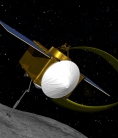

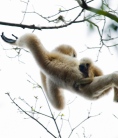




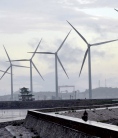









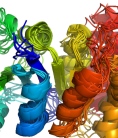

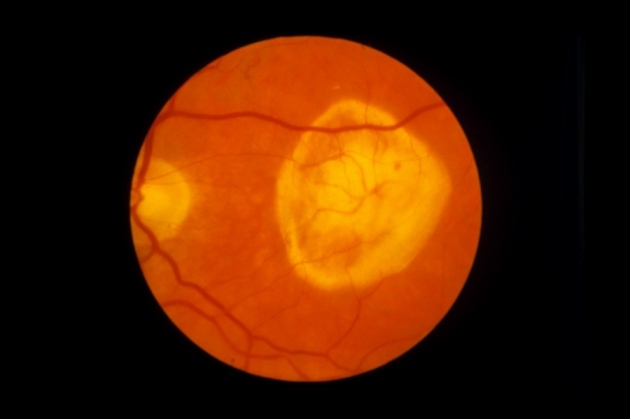
Social Media Box - AML